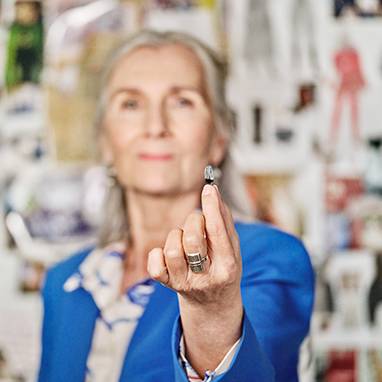Introducing Oticon Own - Meet the new custom family Of ITE Hearing Aids

Liverpool Hearing Centre is back to keep you up to date on all the latest hearing aid technology. This time, we have the latest Oticon Own custom in-the-ear hearing aids for you. If you want to stay up to date on the latest news in the world of hearing technology, sign up for our newsletter and you'll be notified whenever we publish a new article.
Oticon's Most Invisible & Feature-Packed Hearing Aid To Date
Oticon launched their custom Opn family of hearing aids four years ago, which is a lifetime in the world of audiology. And with the changes we've seen from the competition and even updates from Oticon over the years, they were in desperate need of a refresh.
The new Oticon Own family of hearing aids are all custom made, so they are in-the-ear rather than behind-the-ear hearing aids, and as such will require an impression of your ear, which is then sent over to Oticon to be made personally for you. Normally, the production time is around two weeks.
Oticon has decided to stick with the traditional look for their custom family. Unlike Phonak, Starkey, and ReSound, who have all recently released hearing aids that are, let's say, hidden in plain sight, a little like a pair of earphones. The issue we have with hearing aids that look like earphones is that people tend to ignore people who are wearing earphones as the assumption is they are listening to something. So maybe Oticon are doing the right thing.
These new Oticon hearing aids will be available in five sizes, ranging from their invisible-in-canal style all the way up to their full shell, with different features available for each size. Oticon claims that the IIC is their most invisible hearing aid to date, claiming that nine out of ten are completely invisible. Let's just agree that they will be very discreet.
Oticon's miniaturisation advances have allowed both their IIC and CIC hearing aids to be fitted to 90decibels, and their ITC half shell and full shell models to go up to 100 decibel receivers. This means that their hearing aids can now handle more severe hearing loss than ever before.
So, what exactly distinguishes these hearing aids from Oticon's previous Opn family of hearing aids? This time, they borrowed many features from the Oticon More, Oticon's current receiver-in-the-canal, behind-the-ear hearing aids. These are tried and tested products that have been on the market for a few years. Most audiologists would agree that they rank among the best hearing aids we've ever fitted.
Bluetooth is available in ITC and larger styles. As a result, they will not only function as hearing aids, but will also allow you to stream phone calls or media, such as music, radio, and podcasts, directly to your hearing aids, just like a standard pair of headphones. However, they will go above and beyond a pair of headphones by taking into account your hearing loss and enhancing your hearing where it is most needed.
When it comes to streaming phone calls, they function similarly to the Oticon More receiver-in-canal hearing aids. So, for those of you with iPhones, you'll be able to keep your phone in your pocket while the hearing aids both deliver the callers voice to your ear and act as a microphone to pick up the sound of your voice, allowing for a completely hands-free solution.
However, Android devices will only support one-way streaming. While you'll be able to hear the person on the other end of the phone in both of your ears, you'll still need to hold the microphone of your smartphone up to your mouth so the person on the other end of the phone can hear you speak.
Oticon also boasts that these new devices have an IP68 rating, which is now the industry standard for waterproofing. This means they can theoretically be submerged in a metre and a half of water for 30 minutes and still function. Hearing aids do live in a hostile environment, and in-the-ear hearing aids are far more prone to breaking down than their behind-the-ear counterparts, so the fact that Oticon has been able to certify them with this rating is very reassuring.
We're surprised they haven't gone down the custom-made rechargeable battery route. This could be an error on their part, as we're seeing them from companies like Starkey with their new evolve AI hearing aids, Signia with their Charge and Go, and there are no rumours of them developing one.
We'd love to hear what you think of this new family of hearing aids if you're reading this. Is having an invisible hearing aid important to you, or do you just want to hear better? Feel free to contact us and let us know.
Don't forget to subscribe if you enjoyed this article and you haven't already.


